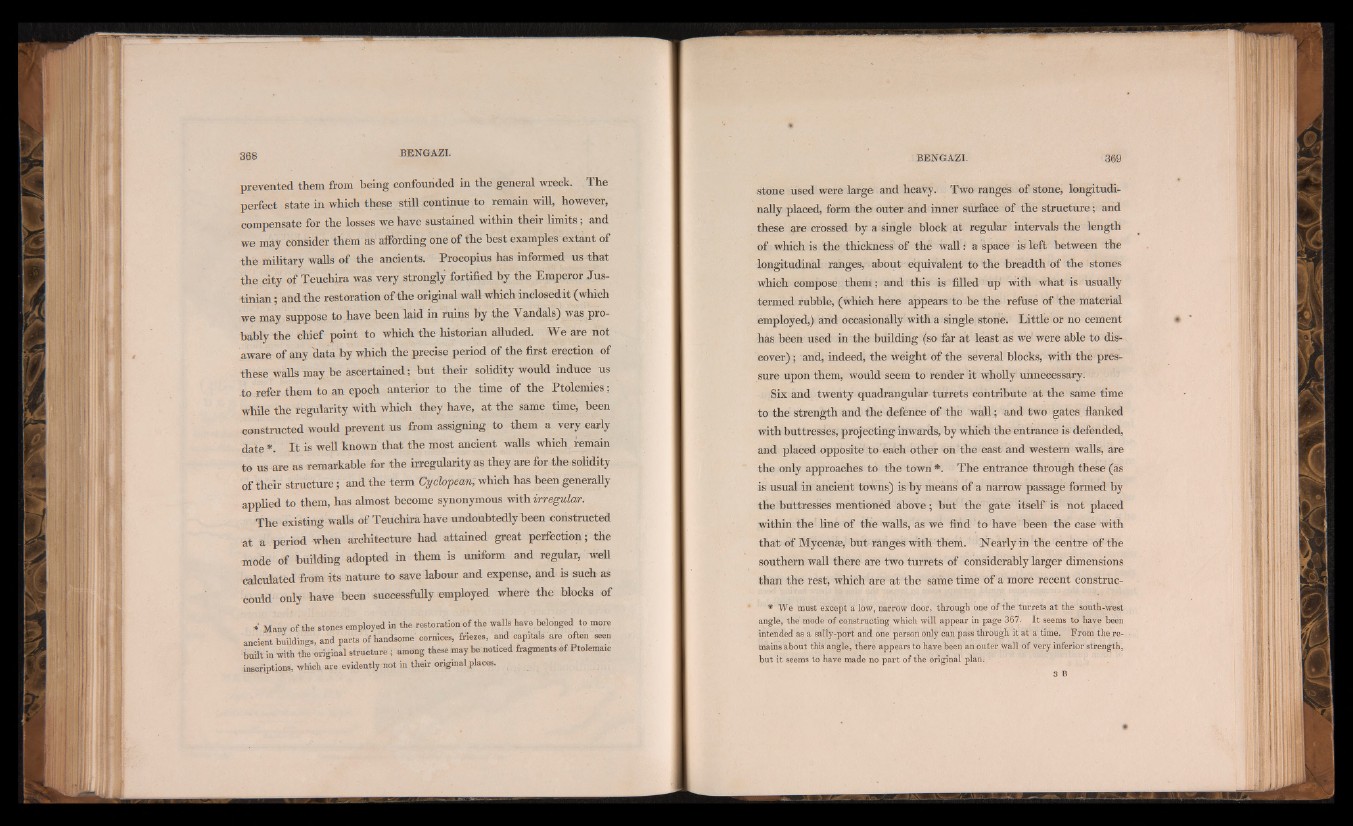
prevented them from being confounded in the general wreck. The
perfect state in which these still continue to remain will, however,
compensate for the losses we have sustained within their limits; and
we may consider them as affording one of the best examples extant of
the military walls of the ancients. Procopius has informed us that
the city of Teuchira was very strongly fortified by the Emperor Justinian
; and the restoration of the original wall which inclosed it (which
we may suppose to have been laid in ruins by the Vandals) was probably
the chief point to which the historian alluded. We are not
aware of any data by which the precise period of the first erection of
these walls may be ascertained; but their solidity would induce us
to refer them to an epoch anterior to the time of the Ptolemies;
while the regularity with which they have, at the same time, been
constructed would prevent us from assigning to them a very early
date *. I t is well known that the most ancient walls which remain
to us are as remarkable for the irregularity as they are for the solidity
of their structure; and the term Cycbpean, which has been generally
applied to them, has almost become synonymous with irregular.
The existing walls of Teuchira have undoubtedly been constructed
at a period when architecture had attained great perfection; the
mode of building adopted in them is uniform and regular, well
calculated from its nature to save labour and expense, and is such as
Could- only have been successfully employed where the blocks of
*' Many of the stones employed in the restoration of the walls have belonged to more
ancient buddings, and parts of handsome corhices, friezes, and capitals are often seen
boat in with the original structure; among these may be noticed fragments of Ptolemaic
inscriptions, which are evidently not in their original places.
stone used were large and heavy. Two ranges of stone, longitudinally
placed, form the outer and inner surface of the structure; and
these are crossed by a single block at regular intervals the length
of which is the thickness of the wall: a space is left between the
longitudinal ranges, about equivalent to the breadth of the stones
which compose them; and this is filled up with what is usually
termed rubble, (which here appears to be the refuse of the material
employed,) and occasionally with a single stone. Little or no cement
has been used in the building (so far at least as we were able to discover)
; and, indeed, the weight of the several blocks, with the pressure
upon them, would seem to render it wholly unnecessary.
Six and twenty quadrangular turrets contribute at the same time
to the strength and the defence of the wall; and two gates flanked
with buttresses, projecting inwards, by which the entrance is defended,
and placed opposite to Cach other on the east and western walls, are
the only approaches to the town *. The entrance through these (as
is usual in ancient towns) is by means of a narrow passage formed by
the buttresses mentioned above ; but the gate itself is not placed
within the fine of the walls, as we find to have been the case with
that of Mycenae, but ranges with them. Nearly in the centre of the
southern wall there are two turrets of considerably larger dimensions
than the rest, which are at the same time of a more recent construe-
* We must except a low, narrow door, through one of the turrets at the south-west
angle, the mode of constructing which will appear in page 367. It seems to have been
intended as a sally-port and one person only can pass through it at a time. From the remains
about this angle, there appears to have been an outer wall of very inferior strength,
but it seems to have made no part of the original plan.